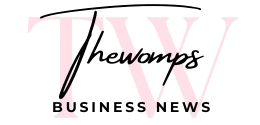What are the most valuable assets on your balance sheet? As a professional services business owner, you probably said, “people.” Health, time, expertise and money might be part of that formula, but no matter how you slice it, your people are mission critical.
So, if you know me at all, you know I like the inventory analogy. Every business has it. For a manufacturing company, inventory looks like component parts and finished goods. For a restaurant it looks like utensils, food, and cooking equipment. Inventory is an essential component of any business. It is the element that combines with customers in that creative concoction whipped up to produce profit. For a professional services firm, inventory is a little different. We keep track of it with a second hand. It’s the seconds, minutes, and hours of each day. It’s the quantum of time that we have available to generate revenue. And where does that critical inventory reside exactly― so ephemeral and fleeting? Hard to say. The quantum physicists tell us that time is an illusion―a construct and that everything is actually happening simultaneously―everything that ever was, is and ever will be. This is a heady concept, but it’s a delicious prospect when you consider the potential for our businesses.
Really, our inventory resides in our imaginations― in our people and their unlimited possibilities. Each person represents an entire realm of time, space and opportunity. Our people are our most important asset. And if we don’t attract the highest quality talent and manage them properly, we will squander those assets. You’ve got to pay very close attention to that perfunctory “HR” box on the org chart.
People bill time. But they help you leverage your time. They are the face of your firm to clients and colleagues. Still, in so many of the firms that we see, there is virtually no discipline around the processes of hiring, training, managing, and measuring people. It’s not that this kind of discipline is hard to implement. It’s just that when it comes to executing on basic HR best practices, most professional service firms don’t spend the time or the effort to do it right.
If you’re building a firm, then you have to take seriously the responsibility you have to develop a systematic way of acquiring, nurturing, developing and managing the best and brightest people. This means that process and discipline around HR is a critical element of your business. Below are the five most common hiring and retention mistakes that you’ll want to avoid at all cost if you intend scale your professional services firm:
Trusting your gut.
I know that sounds counterintuitive, but hiring someone based on your gut―solely on a “feeling” or instinct isn’t smart in the long run. Do your homework and due diligence. Develop a comprehensive hiring and screening process with several steps, crosschecks, multiple interviews and validation pieces. Trust data, the value the candidate can bring, and the way he or she will fit with your culture―rather than the vibe you get from the individual’s personality.
Vague Job Descriptions.
Know who you are seeking. You’ve heard the saying, “When you don’t know where you are going, any road will take you there.” And a very expensive detour can happen before you know it. You may get a new client and need help ― yesterday. So, you react. Maybe you throw some brief descriptors into an email and circulate it to your network, but you should always build a formal job description with all the desired skill sets, personality attributes, relevant job experiences and working relationships defined. Entrepreneur.com provides some great hiring tips for reference. Be sure to inject some romance into your description, as well. Don’t forget the marketing sizzle!
Careless Screening.
Every hiring decision is expensive, so ensure you invest the time required to do it well―and in the context of your overall strategy and business goals. Prepare. Revise. Repeat. Develop probing questions for your candidates that will also help you establish the clear criteria for your hiring decisions, and then keep a good record of the results. Excel, and especially with a few VBA programming tweaks, can automate a lot of the donkey work. Plus, you don’t want to discount a candidate who might just require that extra nudge or question to reveal the spectacularly unique talent you seek.
Failing to Fact Check.
Last summer, CareerBuilder reported that 58 percent of employers surveyed caught a lie on a resume. It’s an inconvenient truth, but it’s probably a good idea to build in a verification step earlier in your hiring process. You can gather revealing work history information early in the “seduction” by checking references and performing second or third interviews. If a candidate then proves to be everything you desire or more, the hiring process can continue. In the same way you vet a vendor purchasing decision, you should conduct the same scrutiny of a prospective employee.
What’s the Question?
Remember to actually ask questions in the interview. Sounds strange, I know. Too often, we get so wrapped up in talking about the job, the business, and our needs that we forget to ask the questions that will tell us if the candidate is actually right for the job. Also, we tend to ask “yes” or “no” questions. Are you willing to travel? Do you know Excel? Can you lead a team? Instead of asking candidates if they can lead a team, ask how they feel about leading team or a particularly challenging leadership experience. This might provide better insight into fit.
So, it’s time to pay more attention to your hiring process. Learn how to create a customized hiring and retention plan that will help you attract and retain the talent you need to build the thriving successful business and life you envision.
